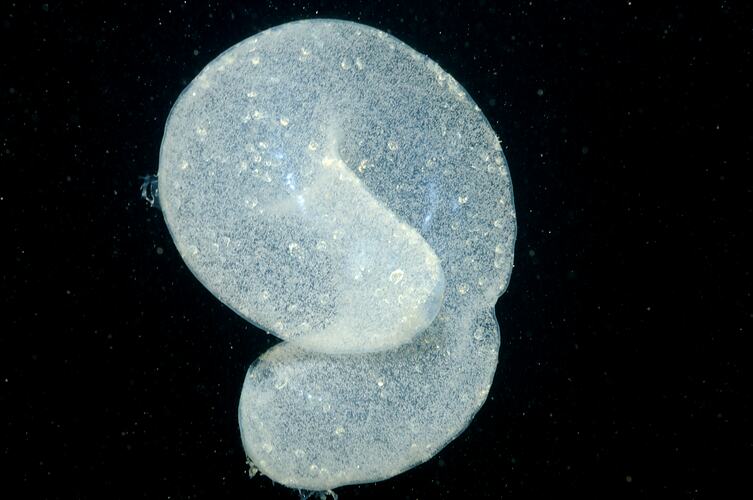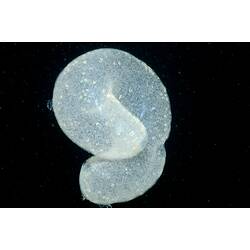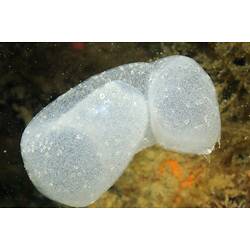General Description
Transparent, sausage shape with no obvious internal structure, but minute dots (eggs) may be visible with a handlens. Usually around 3.5 cm in diameter and up to 25 cm long.
Biology
Moon Snail egg masses usually float near sand areas and easily crumble when handled. They often wash up on beaches in the spring and are sometimes mistaken for jellyfish. These egg masses consist of many tiny eggs in a jelly matrix. The matrix absorbs water and swells to form the distinctive crescent-shaped tube which can be three to five times larger than the snail that laid it. The egg masses break up in the water after a few days, releasing planktonic larvae from the eggs. Polinices conicus produces very similar egg masses.
Distribution
Eastern mainland Australia and Tasmania.
Habitat
Sand and mud areas.
More Information
-
Animal Type
-
Animal SubType
-
Brief Id
Sausage shape, transparent, no internal organs.
-
Colours
White, Transparent
-
Habitats
-
Endemicity
-
Commercial
No
-
Conservation Statuses
CITES: Not listed, FFG Threatened List: Not listed, DSE Advisory List: Not listed, IUCN Red List: Not listed
-
Depths
Shore (0-1 m), Shallow (1-30 m)
-
Water Column Locations
Midwater, Surface, On or near seafloor
-
Taxon Name
-
Scientific Author
(Swainson, 1821)
-
Common Name
Moon Snail egg mass
-
Phylum
-
Subphylum
-
Superclass
-
Class
-
Subclass
-
Superorder
-
Order
-
Suborder
-
Infraorder
-
Superfamily
-
Family
-
Subfamily
-
Genus
-
Subgenus
-
Species Name
sordidus




